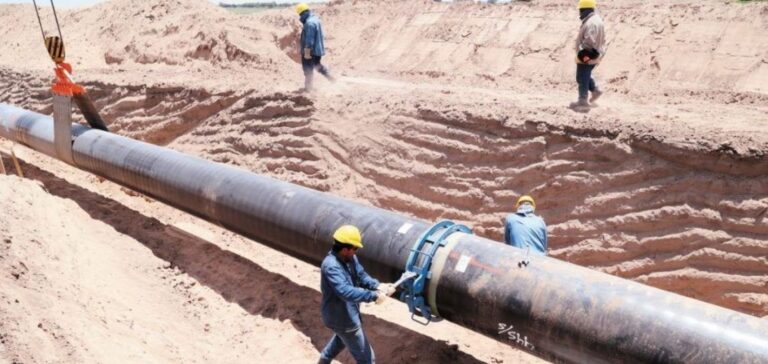Argentina’s Minister of Energy, Flavia Royon, said on August 22 that a project will be launched in the next few days to convert a pipeline in northern Argentina to transport natural gas north from the Vaca Muerta shale zone, helping to offset falling imports from Bolivia.
Energy Alert: Argentina Seeks the Return of the Pipeline
“The return of the pipeline is urgent”, she declared at the Argentine Round Table on Energy organized by the Institute of the Americas in Buenos Aires.
“Bolivia is experiencing a sharp drop in gas production and will not be able to meet its supply agreement with Argentina.”
Argentina has depended on gas imports from Bolivia for almost 20 years to meet demand in the north, where gas fields on its side of the border are in decline in terms of production and reserves. This dependence on Bolivian gas in northern Argentina, including for power generation, has raised concerns about shortages in recent years, as Bolivian production declines. Bolivia’s gas production fell by 18% to 34.6 million m3/d in May, against an average of 42.2 million m3/d for the whole of 2022, and by 43% from a peak of 60.8 million m3/d for the whole of 2014, according to data from the Bolivian National Institute of Statistics.
New Gas Route: Vaca Muerta Pipeline supplying Northern Argentina
Vaca Muerta is emerging as the new gas source for northern Argentina, thanks to its enormous resources – estimated at 300 Tcf, equivalent to 150 years of national demand – and the construction of a pipeline to move production to the center of the country. The first section of the Vaca Muerta pipeline was commissioned in July, transporting 11 million m3/d to central Buenos Aires province.
The addition of compression plants will increase throughput on this first section to 22 million m3/d later this year, but the second section of the pipeline is needed to supply gas to the north, says Royon. The second section will increase the throughput of the Vaca Muerta pipeline to 44 million m3/d by 2025 to supply the center of the country, where there is a connection with the northern pipeline. Royon said the government was working on how to finance the second section of the pipeline, adding that the auction for its construction will take place in September.
In April, Royon stated that these two pipeline projects will enable Argentina to stop importing gas from Bolivia by 2024 or 2025, leaving gas imports from the global LNG market to peak winter demand periods in June, July and August. Argentina’s gas imports fell by 12% to 14.9 million cu m/d in the first half of this year, compared with 16.9 million a year earlier, according to the latest data from the Energy Secretariat.
Vaca Muerta’s growing capacity: Towards a surge in production
The addition of Vaca Muerta’s takeaway capacity “will lead to a leap in production”, said Royon. Neuquén, home to most of Vaca Muerta’s development acreage, produced 91 million cu/d in June, up 0.9% on the previous month’s 90.2 million cu/d, according to the latest data from the province’s Ministry of Energy.
The government of Neuquén has set itself the target of increasing gas production to 160 million m3/d by 2027 or 2028, thereby increasing export potential given that Argentina consumes an average of 140 million m3/d and peaks at 200 million m3/d in winter. Exports from Neuquén in the first half of this year averaged 6.1 million m3/d, with most deliveries going to Chile, the ministry said. Neuquén produces around 60% of the country’s 130 million m3/d, according to data from the Argentine Institute of Oil and Gas, an industry group. It also exports gas to Brazil and Uruguay.






















